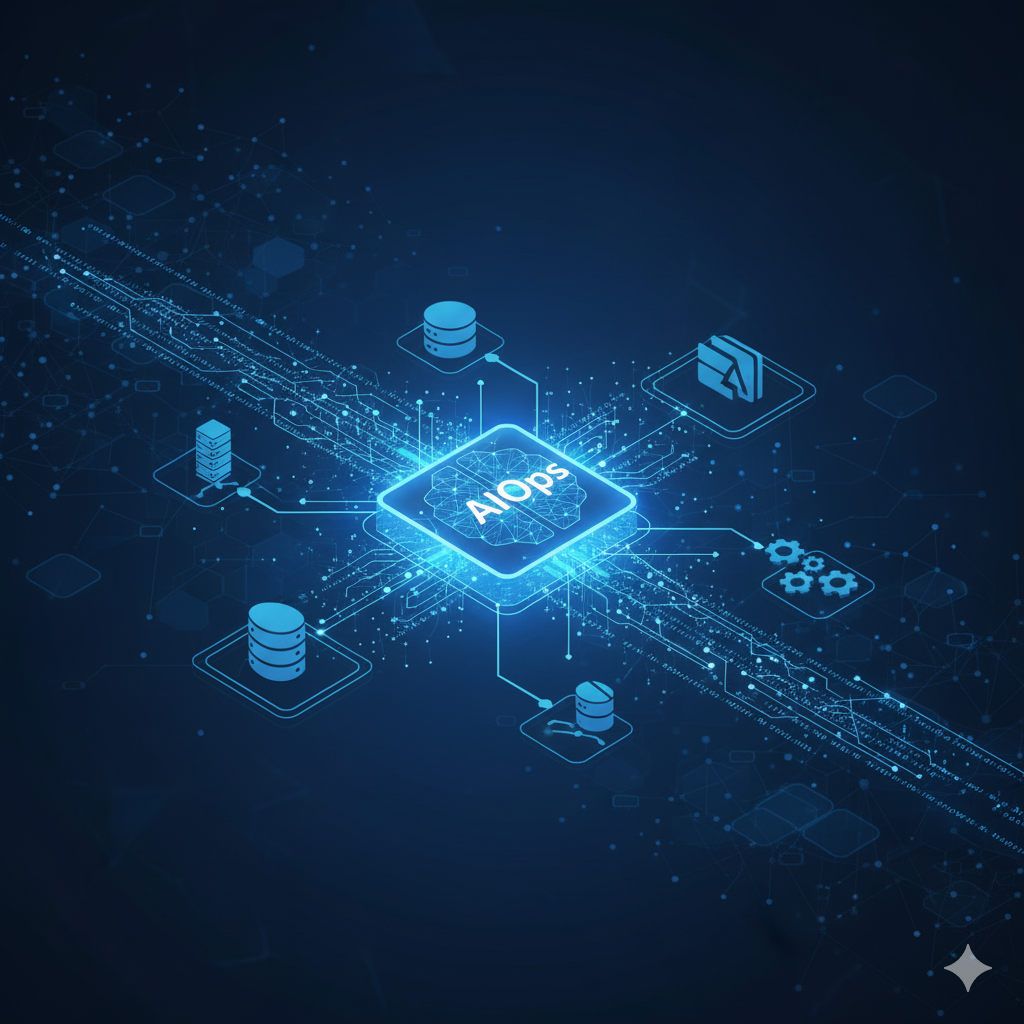In today’s hyper-connected digital world, cloud infrastructure—specifically environments like Azure—is the non-negotiable backbone of every modern enterprise. As these environments scale, becoming more complex, dynamic, and distributed, managing performance, security, and cost with traditional, manual IT operations is no longer just difficult; it’s impossible.
This is where AIOps (Artificial Intelligence for IT Operations) steps in—transforming the way we monitor, analyze, and automate our cloud ecosystems.
What is AIOps, and Why is it Essential on Azure?
AIOps is the practice of combining machine learning, big data analytics, and automation to intelligently analyze vast, high-velocity streams of operational data. It helps technical teams move decisively from reactive firefighting (waiting for alerts) to proactive problem prevention (predicting issues)—improving uptime, drastically optimizing costs, and dramatically reducing manual intervention.
In the context of Azure Infrastructure, AIOps is natively powerful. It uses telemetry already generated by Azure services like Azure Monitor, Log Analytics, Application Insights, and Azure Advisor, applying sophisticated machine learning models to detect subtle patterns, predict failures, and recommend or automatically execute incident remediation.
The Integration: How AI Seamlessly Fits into Azure Operations
The beauty of AIOps is how naturally it integrates into existing Azure workflows, making them smarter and faster:
- Predictive Monitoring: Instead of merely alerting on high CPU, AI models can identify performance degradation hours or days before it actually impacts end users, allowing for pre-emptive scaling.
- Intelligent Root Cause Analysis (RCA): AI rapidly correlates millions of data points—metrics, logs, and alerts—to pinpoint the exact source of an issue, eliminating hours spent manually sifting through dashboards.
- Automated Remediation: Once a problem is diagnosed or predicted, the AIOps platform can integrate with Azure Automation Runbooks or Logic Apps to execute auto-healing actions, such as restarting a failing service or isolating a compromised resource.
- Cost Optimization: AI-driven insights continuously review utilization trends, intelligently recommending scaling adjustments, rightsizing VMs, or identifying costly, idle resources that can be terminated.
- Security Operations (SecOps): Using tools like Microsoft Sentinel or Defender for Cloud, AI detects anomalies in sign-ins, suspicious network traffic, or unusual storage access patterns, turning vague security noise into actionable threat intelligence.
Real-World Scenario: Achieving Predictive VM Health Monitoring
Let’s illustrate this with a practical example that plagues almost every Ops team.
The Traditional Problem: Azure Ops teams are constantly flooded with multiple, noisy alerts (alert fatigue) for issues like sudden high VM CPU usage or intermittent service unresponsiveness. This leads to delayed, reactive action and often unnecessary downtime.
The AIOps Solution on Azure:
- Data Ingestion: Historical CPU, memory, and network utilization metrics are continuously fed from Azure Monitor Logs into a machine learning environment (like Azure Machine Learning).
- Model Training: An ML model is trained not just to flag thresholds, but to recognize the pattern that precedes a catastrophic failure or user-impacting slowdown.
- Proactive Action: When the model’s prediction confidence reaches a certain threshold (e.g., 95% certainty of slowdown within the hour), it triggers an Azure Function or Automation Runbook. This runbook can then automatically scale up the VM, distribute the load, or restart specific services.
- Feedback Loop: Post-action insights (how the system responded) are fed back into the ML model for continuous learning and accuracy improvement.
The Outcome: Companies implementing this approach see a verifiable 30-40% reduction in manual, emergency incident response, dramatically improved Service Level Agreement (SLA) compliance, and a profound shift to predictive visibility into their infrastructure health.
What You Need to Implement AIOps on Azure
To build an effective AIOps practice, the starting pieces are within the Azure ecosystem itself, ready to be connected and utilized:
- Unified Data Collection: This is your foundation. Harness the power of Azure Monitor, Log Analytics, and Application Insights to aggregate data streams.
- Automation Backbone: Utilize Azure Automation, Logic Apps, and Functions to build the necessary auto-remediation scripts and low-code workflows.
- AI/ML Capabilities: Start by leveraging pre-built intelligence in Azure Advisor and Microsoft Sentinel, then scale up to custom models using Azure Machine Learning for complex predictions.
- Integration Tools: Ensure your new insights flow into your team’s tools, whether that’s Azure DevOps, ServiceNow, or Power BI for reporting.
- Governance & Security: Implement guardrails and compliance checks through Azure Policy and Defender for Cloud to ensure autonomous actions are always secure and compliant.
The Road Ahead: Intelligence Over Instinct
AIOps is not a movement meant to replace human expertise; it’s about augmenting operations teams with intelligent, data-driven capabilities. It removes the low-level noise, allowing engineers to focus on architecture, innovation, and strategic projects.
In the next few years, we will see the rise of truly self-healing Azure infrastructures that learn from every incident, predict failures with near-perfect accuracy, and execute corrective actions autonomously.
If your organization is looking to modernize cloud operations and gain a competitive edge in efficiency and reliability, adopting AIOps within Azure is not a luxury—it’s a strategic necessity that must be addressed today.
Final Thought: “AIOps is where cloud meets intelligence—turning reactive operations into proactive excellence.”


